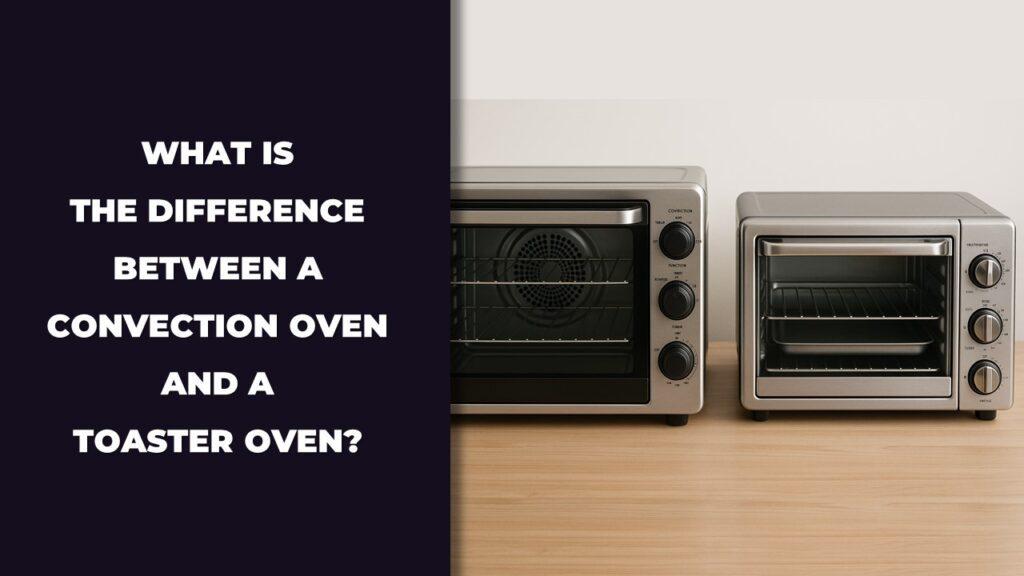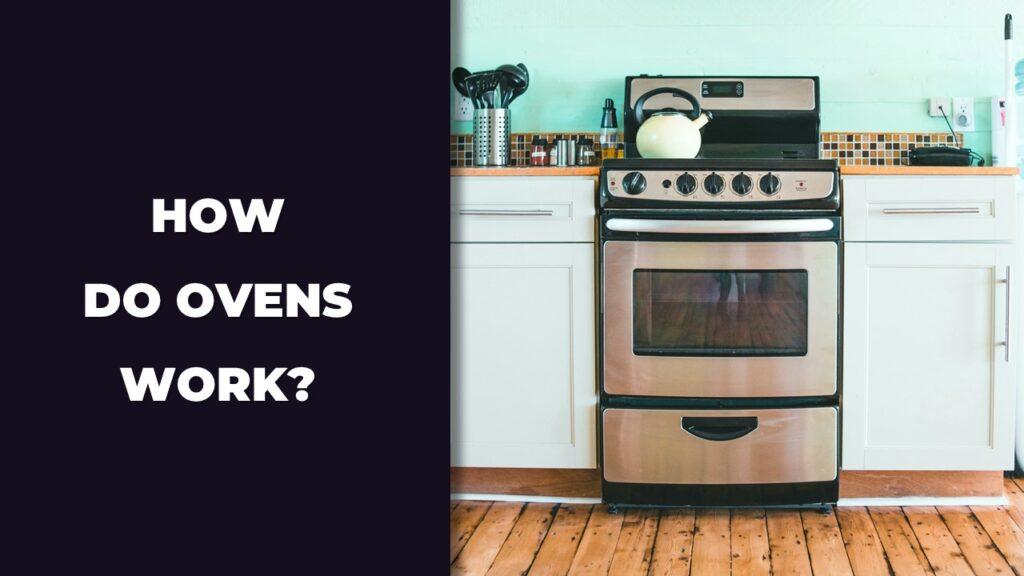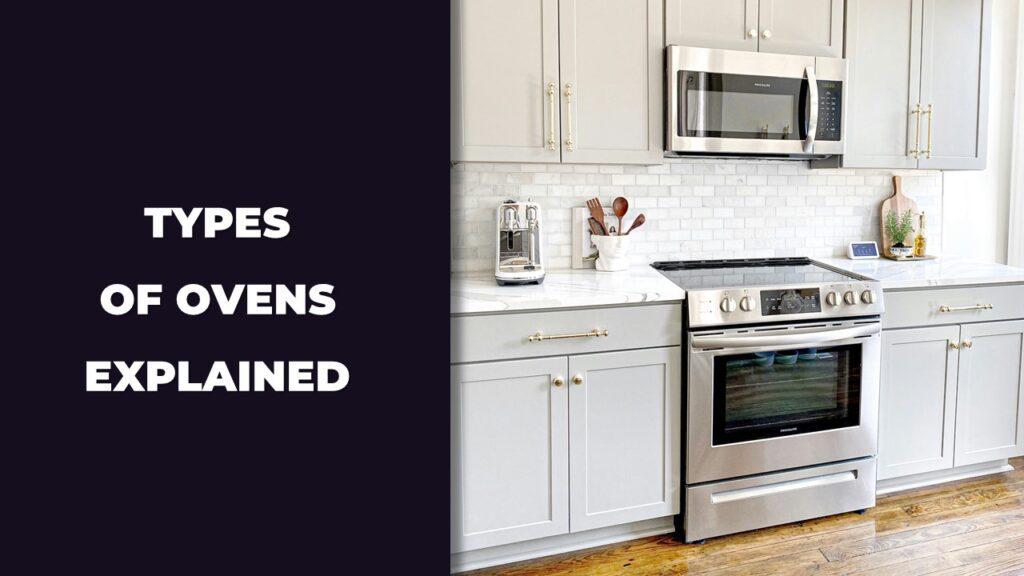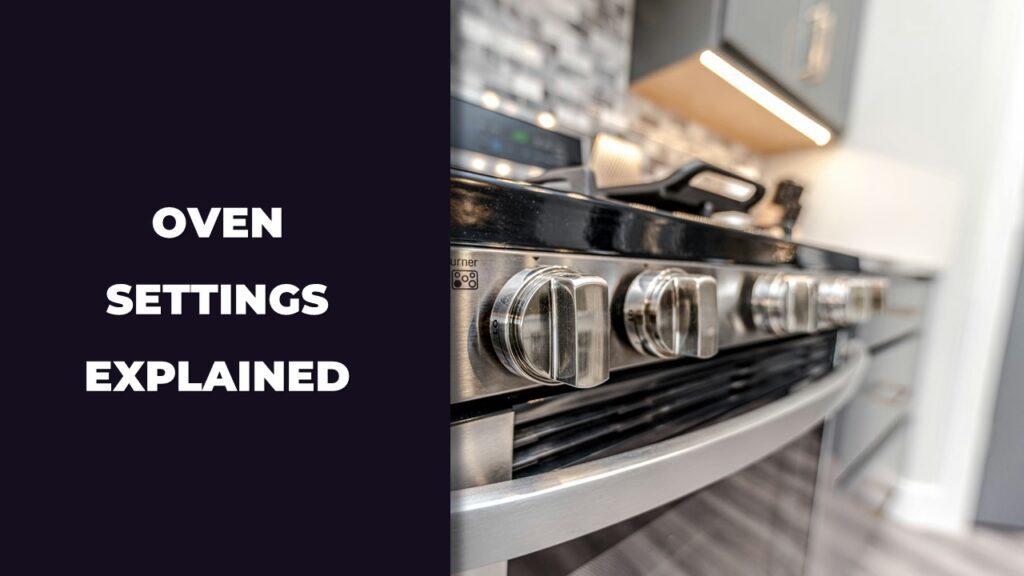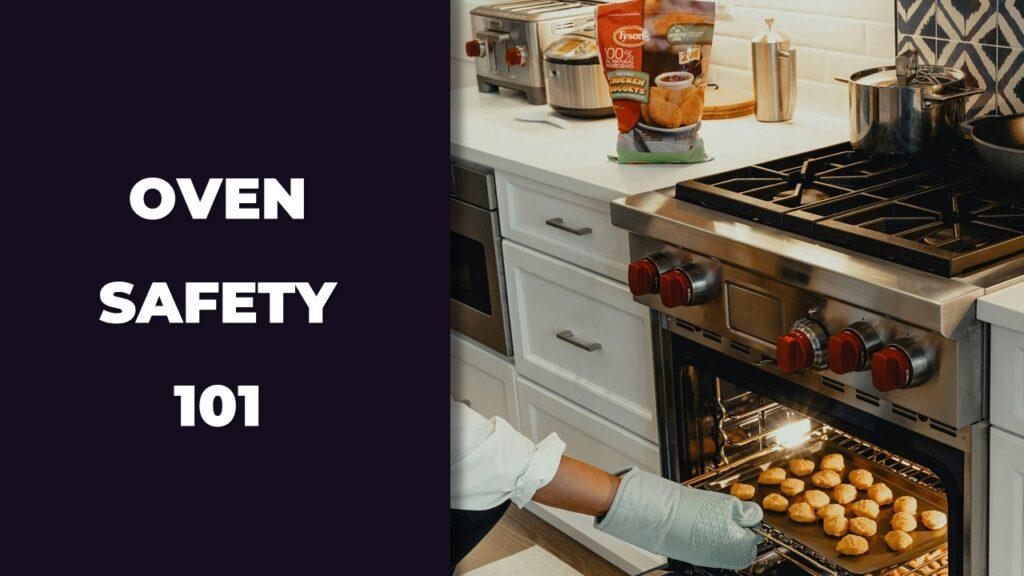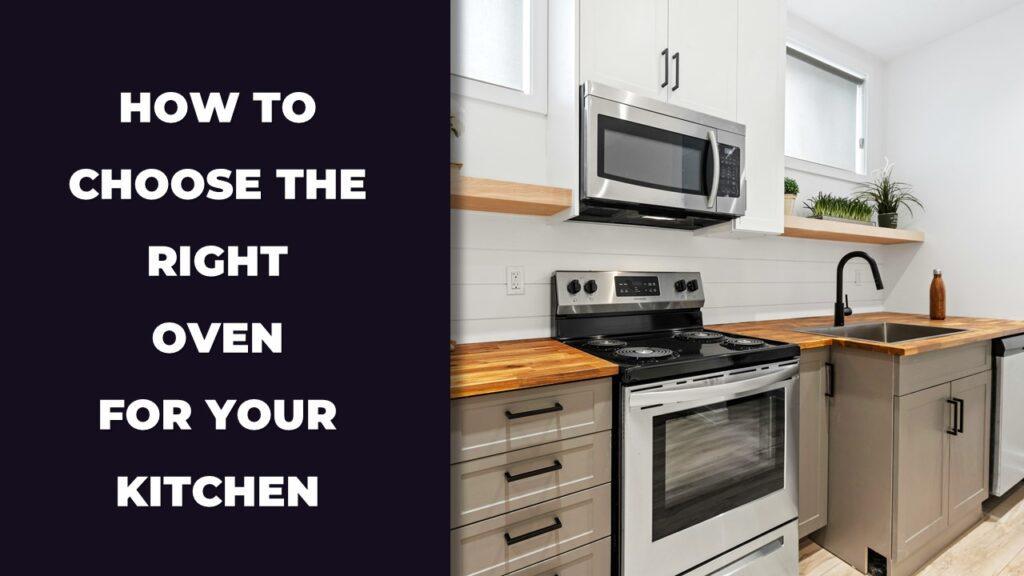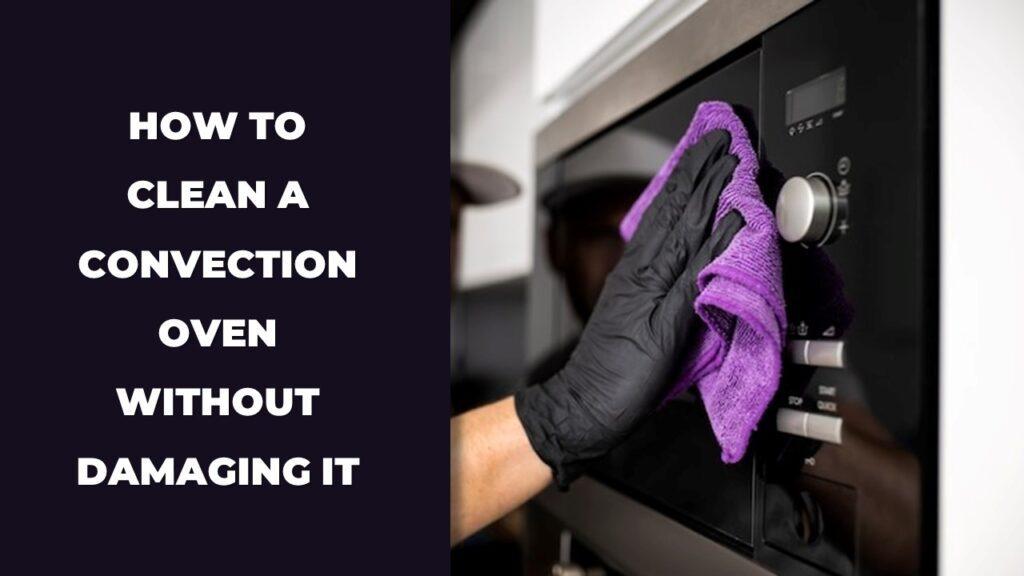
To clean a convection oven without damaging it, turn it off, let it cool completely, then wipe the inside using a soft cloth and a mix of warm water and mild dish soap. Stay away from harsh cleaners, don’t scrub the fan or heating elements, and dry everything well before turning it back on.
In this article, we’re going to show you how to clean your convection oven safely, using simple tools and methods that actually work. We’ll also go over what to avoid, how often to clean, and a few tips to keep your oven in good shape for the long run.
Why Proper Cleaning Of A Convection Oven Matters
Proper cleaning helps your convection oven work better, last longer, and stay safe. Grease and food bits can block airflow, affect cooking temperatures, and cause smoke or burning smells. Regular cleaning keeps everything running smoothly and prevents damage to key parts.
- Improves cooking results: Clean ovens circulate heat evenly, helping food cook the way it’s supposed to
- Reduces odors and smoke: Old food spills can burn during preheat or cooking, causing unpleasant smells
- Prevents damage to internal parts: Grease buildup around fans or elements can trigger shut-offs or shorten lifespan
- Keeps your kitchen safer: Built-up grease and crumbs may catch fire if ignored too long
- Saves money on repairs: Many service calls happen because of neglected cleaning, not broken parts
Know Your Oven: Materials And Cleaning Sensitivities
Different parts of a convection oven need different cleaning methods. The inside walls, fan, heating elements, door, and control panel all react differently to water, heat, and scrubbing. If you clean without knowing what you’re touching, you might scratch something, short a part, or wear it out early.
- Interior enamel walls: Glossy, easy to wipe, but scratch easily; use soft cloth and gentle cleaner
- Convection fan housing: Never spray directly on it; clean around it with a soft brush or cloth
- Heating elements: Don’t soak or scrub; wipe gently when cool using a slightly damp cloth
- Glass oven door: Use baking soda paste or vinegar spray for spots; skip razors or abrasive tools
- Door seals (rubber or silicone): Clean with mild soap and soft cloth; avoid harsh chemicals
- Touchscreen or control panel: Dry wipe only; use a microfiber cloth and never spray liquid directly
Knowing which parts need a light touch helps you clean smarter without ruining anything.
Step-By-Step Cleaning Process (Without Risking Damage)
Here is the step-by-step process to clean a convection oven safely, without damaging its parts:
- Unplug the oven and let it cool down fully
- Take out racks, trays, and accessories
- Wipe away loose crumbs and dry debris
- Use a safe cleaning mix like baking soda or vinegar
- Avoid spraying directly on the fan, heating elements, or control panel
- Let the cleaner sit for a few hours
- Gently scrub the inside with a soft cloth or sponge
- Rinse off any leftover cleaner
- Dry everything completely
- Reassemble and test the oven
Now, let’s walk through each of these steps in more detail.
Step 1: Power Down And Let It Cool
Always unplug the oven or switch off the breaker before cleaning. This keeps you safe from shocks or shorts. Then, wait until the oven is completely cool. Touch the inside walls or racks to check. Cleaning a hot oven can damage surfaces and burn your hands.
Step 2: Remove Racks And Accessories
Take out the oven racks, trays, and any loose inserts. These parts can collect grease and crumbs fast. Soak them in warm, soapy water. You can clean them later with a non-abrasive sponge. Set them aside to dry while you move on to the oven interior.
Step 3: Dry Wipe Loose Crumbs And Residue
Use a soft, dry cloth or a small handheld vacuum to remove crumbs and dry bits of food. Pay attention to corners and under the fan cover. Don’t use water yet—this step helps prevent you from rubbing grease into the surface during wet cleaning.
Step 4: Apply A Safe Cleaning Solution
Pick one of these options based on what you have:
- Baking soda paste: Mix baking soda and water until it forms a thick paste
- Vinegar + water spray: Use equal parts white vinegar and water in a spray bottle
- Enamel-safe commercial cleaner: Read the label and follow directions
Do not spray any cleaner directly on the heating elements, the fan blades, or the control panel. Wipe around them gently if needed.
Step 5: Let It Sit And Break Down Grease
Leave the baking soda paste or vinegar spray on greasy spots for a few hours. For tougher buildup, you can let the baking soda sit overnight. This resting time helps soften stuck-on grime without needing hard scrubbing.
Step 6: Gently Scrub Interior Walls
After the cleaner has had time to work, use a soft cloth or sponge to wipe the interior. Move in small circles to lift away grease and stains. Skip metal brushes or rough scrubbers—they can scratch the enamel and cause more harm than good.
Step 7: Clean The Glass Door Separately
The inside of the oven door usually gets the worst splatter. Apply a little baking soda paste or vinegar spray directly to the glass. Let it sit for 10–15 minutes, then wipe it clean. For extra shine, finish with a soft dry cloth.
Step 8: Rinse And Remove All Residue
Take a clean, damp cloth and wipe down all surfaces you cleaned. You want to remove any leftover baking soda, vinegar, or cleaner. Go over it more than once if needed. Cleaning residue left behind can burn and smoke during the next use.
Step 9: Let The Interior Dry Completely
Leave the oven door open and give it time to air out. You can also use a dry towel to speed up the drying process. Never run the oven while it’s still damp inside—moisture near the fan or elements can cause serious problems.
Step 10: Reassemble And Test
Put the racks and trays back in their place. Plug the oven back in or switch the breaker on. Run the oven empty at a low temperature for 5 to 10 minutes. This helps clear out any leftover smell or dampness. If everything runs smoothly, you’re good to go.
What To Avoid To Prevent Damage
To avoid damaging your convection oven, skip abrasive tools, harsh chemicals, and spraying water near electrical parts. Many people ruin their oven by using steel wool, soaking heating elements, or overloading it with cleaner. Being gentle and precise keeps your oven working the way it should.
Here are the things to avoid:
- Steel wool or scouring pads: These can scratch the enamel coating and leave permanent marks
- Harsh chemical sprays: Cleaners with bleach, ammonia, or lye can break down seals and damage surfaces
- Spraying directly onto controls or heating elements: Moisture can seep into electrical parts and cause shorts
- Leaving moisture inside after cleaning: Trapped water may cause rust or affect the fan motor
- Using the oven while it’s still damp: Turning it on too soon after cleaning can lead to smoking, electrical issues, or warping
- Cleaning the fan without instructions: Touching or spraying the fan may affect its balance or performance if done improperly
Stick with soft materials, natural cleaners, and let everything dry before switching it back on.
Natural And Non-Toxic Cleaning Options (Safe For Convection Ovens)
Natural cleaning methods like baking soda, vinegar, and lemon are safe, budget-friendly, and won’t harm your oven’s parts. These options work well for light grease and stuck-on grime, especially when used regularly. They’re also great if you want to avoid chemical fumes or residues.
Baking Soda And Vinegar Method
This is one of the safest and most popular ways to clean a convection oven.
- Mix baking soda with a little water to form a thick paste
- Spread the paste over greasy spots inside the oven
- Let it sit for at least 4 hours, or overnight for heavy grime
- Spray vinegar over the dried paste—it will fizz and help loosen the dirt
- Wipe with a soft, damp cloth, then dry fully
It’s gentle, effective, and safe for enamel and glass surfaces.
Lemon Steam Method
Lemon steam helps loosen food splatter and leaves a fresh smell behind.
- Slice 1–2 lemons and place them in a baking dish with water
- Set the dish in the oven and heat at 250°F for 20–30 minutes
- The steam softens dried grease and makes wiping easier
- Turn off the oven, let it cool, then wipe with a damp cloth
This method is best for regular light cleaning and deodorizing.
Castile Soap + Water Spray
Castile soap is a gentle, plant-based cleaner that’s safe for oven interiors.
- Mix 1 teaspoon of Castile soap with 2 cups of warm water in a spray bottle
- Spray lightly on interior surfaces (avoid fan and heating elements)
- Let it sit for 5–10 minutes
- Wipe clean with a soft cloth, then rinse and dry
It’s a good daily cleaner, especially if you wipe down your oven after each use.
How To Clean The Convection Fan Safely
To clean a convection oven fan safely, turn off the power, avoid spraying liquid directly on the blades, and use a soft brush or dry cloth around the cover. Most manufacturers recommend leaving the fan itself alone unless your manual says otherwise.
If you notice grease or crumbs near the fan area, you can gently wipe around the housing with a dry microfiber cloth. If the fan cover is removable, take it off carefully and use a soft-bristled brush to clear out debris. Never soak or scrub the blades, and do not use water or spray cleaner directly into the fan opening.
For deeper cleaning or if the fan looks clogged, it’s best to contact a technician. Trying to clean the motor or disassemble the fan without proper steps can lead to damage or safety problems. Always check your oven manual before touching anything inside the fan housing.
How Often Should You Clean A Convection Oven?
You should clean your convection oven lightly after each use, wipe it down weekly, and do a full deep clean every 1 to 3 months depending on how often you cook. Regular cleaning keeps grease from building up and helps the oven stay efficient and odor-free.
After Each Use
Wipe away spills and splatters with a damp cloth once the oven cools. This stops grease from hardening and saves time later. A simple wipe-down takes less than a minute and helps prevent smoke or burning smells the next time you cook.
Weekly
Remove the racks and clean any crumbs or food bits stuck inside. Check around the fan cover and door edges. You can also use a mild soap solution to gently clean the door and sides. This helps stop buildup from turning into hard-to-clean grime.
Monthly
Do a deeper clean using natural cleaners like baking soda or vinegar. Let the solution sit, scrub gently, rinse, and dry the oven well. Pay close attention to corners and areas near the fan. A monthly clean keeps the oven working efficiently.
Every 3–6 Months
Plan a full cleaning session every few months. This includes racks, the interior, and a visual check of the fan and seals. If you bake or roast often, stick closer to the 3-month mark. If you use it less, cleaning twice a year may be enough.
Is It Safe To Use The Self-Cleaning Feature On A Convection Oven?
Yes, it’s generally safe to use the self-cleaning feature on a convection oven, but it should be used sparingly. The high heat can wear out parts over time, and it’s not the best method for heavy grease or stuck-on spills.
Pros Of The Self-Clean Mode
It’s convenient, doesn’t need chemicals, and burns off light residue by heating the oven to a very high temperature. Once finished, you just wipe away the ash. It works best when the oven isn’t heavily soiled.
Risks And Downsides
Running the self-clean cycle can stress parts like door seals, sensors, or the fan motor. Some ovens may produce smoke if there’s grease inside. It can also raise your kitchen temperature and trigger smells or alarms.
When And How To Use It
Only use self-cleaning when the oven has light grime, not after a major spill. Always follow the manual and never leave the oven unattended while it runs. After the cycle ends and the oven cools, wipe away the ash and dry the inside before using it again.
When To Call A Professional Cleaner Or Technician
Call a professional cleaner or technician if your convection oven has a persistent odor, a noisy fan, error codes, or you notice smoke or electrical issues during use. These signs usually mean something deeper is going on that home cleaning can’t fix.
If the fan is making strange sounds, not spinning properly, or seems clogged behind the cover, it’s best not to touch it yourself. Trying to clean or disassemble it without proper training can cause damage or make the problem worse. A technician can check the motor, housing, and airflow safely.
You should also call for help if the oven gives off a strong burning smell even after cleaning, if it shuts off during use, or if there’s visible damage to the control panel or heating elements. Regular deep cleaning is great, but some problems need expert hands and tools.
Ongoing Maintenance Tips For A Cleaner Oven Long-Term
To keep your convection oven clean for the long run, wipe it down regularly, use natural cleaners, and avoid letting food build up inside. Simple habits can save you from deep scrubbing later and help the oven run more efficiently.
After every use, let the oven cool and wipe any spills before they dry out or burn in. Even a quick swipe with a damp cloth keeps grease from turning into baked-on grime. Covering dishes or using a baking tray can also help reduce splatter.
Every few weeks, take a closer look at the fan area, door frame, and oven floor. Clean racks, door glass, and hard-to-reach corners as needed. Leave the door open for a bit after cleaning to let it dry fully. These small steps keep your oven fresh, efficient, and ready to cook whenever you are.
Final Thoughts
Cleaning a convection oven the right way isn’t just about keeping it looking nice. When you use soft cloths, natural cleaners, and avoid harsh chemicals or water near sensitive parts, you help the oven run more evenly and safely. Skipping those abrasive tools and letting everything dry fully really makes a difference.
Taking care of your convection oven also helps it last longer. A buildup of grease or burned-on food can block airflow, cause bad smells, and even trip sensors. Cleaning the fan area gently, wiping up spills early, and doing monthly deep cleans keeps things working like they should.
In short, safe cleaning habits mean fewer repairs, better cooking performance, and a more dependable oven. Whether you’re baking a cake or roasting dinner, a clean convection oven always delivers better results without the stress of smoke, odors, or uneven heating.
Related FAQs
Can I use oven cleaner spray in a convection oven?
Yes, but only if it’s labeled as enamel-safe and fume-free; always test it on a small spot and avoid spraying near the fan or controls.
What if the fan blades are greasy? Should I clean them?
Only clean around the fan if your manual allows it; never touch the blades directly unless you’re told it’s safe to do so.
Is vinegar safe for all parts of the oven?
Vinegar is safe for most interior surfaces, but don’t spray it on the heating elements or electronic parts like the control panel.
How do I prevent my oven from smelling after cleaning?
Make sure you rinse and dry all areas well, leave the door open to air out, and avoid using too much cleaner that might leave residue.
Can I clean a convection oven with steam only?
Steam can help loosen light grime, but it’s not enough for stuck-on grease; it works best as a prep step before wiping down.

At our core, we’re a group of passionate households and gardening tools and appliances users and enthusiasts. We dive deep into the world of tech, especially when it’s about your household or gardening electric items. We try to provide as much value to the readers with our information and how to blog articles as possible. For affiliate articles our honest and transparent reviews of essential tech products are rooted in real-world experience. We take great satisfaction in offering unbiased evaluations, ensuring that you can make informed decisions when investing in your desired techs.

